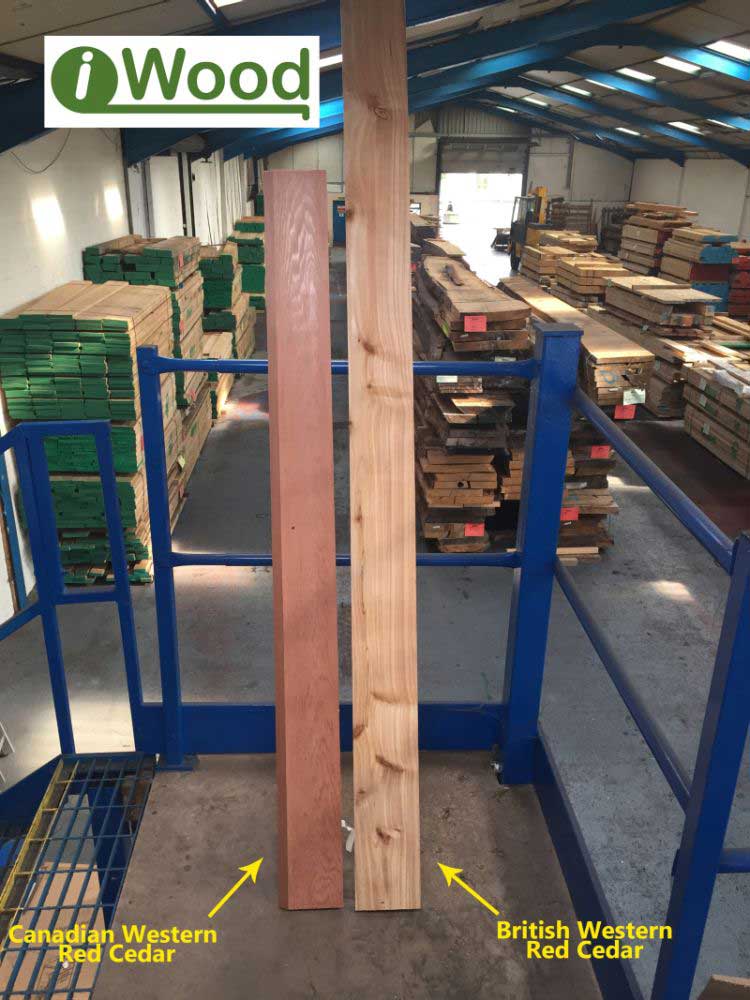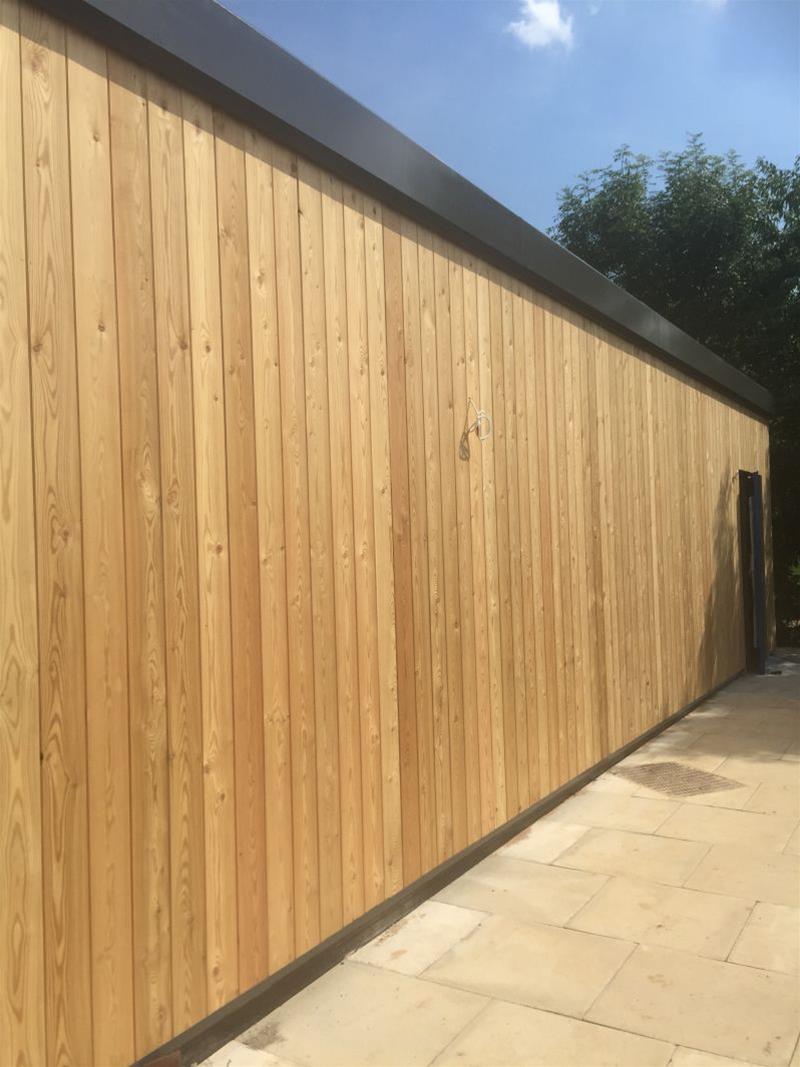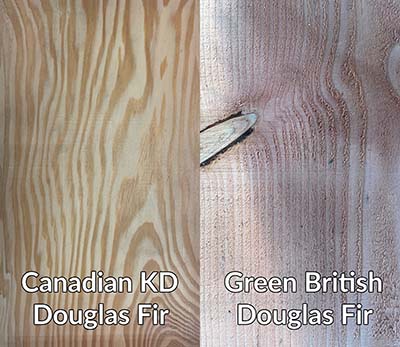Articles: Are British timbers different?
Differences between homegrown and overseas timbers
With the recent celebration of British Timbers with Grown in Britain week and the surge of British Timber interest we’ve put together this article together to cover one of our most frequently asked questions.
Whilst they do have the same physical properties in terms of durability and longevity, British timbers do have a variance in aesthetics and usage applications.
In this article we will discuss the differences in Western Red Cedar, Larch, Douglas Fir and Oak. One of the main differences at the time of writing this article is production lead time. British sawmills are still struggling to keep up with the demand and so whereas overseas timber lead times are slowly stabilizing back down to pre-covid levels, British Timbers are still at the 6 – 8 week mark.
In addition to lead times British Timbers as a whole are much more environmentally friendly as they don't have to be imported into the country. This alone is very attractive to many of our customers and even if there is a preference for the aesthetic of the imported option they will still opt for homegrown timbers.
Western Red Cedar

Cedar grown in Canada is sought after for its low knot content and brilliant diversity of colours. For iWood, Canadian Western Red Cedar is one of, if not our most popular cladding timber.
Dubbed by the iWood team as the” Rolls Royce of the softwoods”, its price does reflect its aesthetic appeal and when our customers still want cedars interesting mixture of colour but don’t have enough room in the budget for Canadian grown cedar we often offer its cheaper homegrown alternative.
British Cedar does have colour variance like Canadian Cedar but rather than the deep rich purple and orange hues, it’s a much lighter creamier colour and it’s knot content is also quite a bit higher.
In terms of its physical characteristics, the Canadian Cedar is a bit more durable and stable than British Cedar which means it doesn’t require treatment as a finished product to be maintained.
Larch

Larch is a very popular cost-effective softwood with a wide variety of applications. Due to its exceptional durability, stability and hardness its very effective as cladding, decking or even beams.
Siberian Larch is the imported option and is the higher quality of larch. We have two grades available, Sawfalling and unsorted. Unsorted is for those who are after the durability of larch but want a clean and aesthetic look with minimal knots, Sawfalling is the characterful grade with a strong grain and knotty appearance.
Larch can also be grown in the UK and has many of the same qualities as its Siberian counterpart. The British larch has a few aspects that set it aside though.

Firstly, British larch is supplied only as fresh sawn green timber and can not be offered kiln dried, this allows us to offer it in larger beam sections which makes it an excellent affordable alternative to common structural hardwoods such as oak.
Secondly, they can differ in aesthetics. Whereas Siberian Larch is often a yellow brown colour, British larch tends to be more of an orange colour.
Finally, because its grown right here in the UK its much cheaper than the imported Siberian Larch and is one of the most cost effective timbers we sell so if you’re on a tight budget but still want a tough and durable timber British Larch is the way to go.
Douglas Fir

Similar to Cedar, Douglas fir originates from Canada and is also grown here in Britain. We supply our Canadian Douglas Fir Kiln Dried for joinery use, graded Clear and Better it boasts a low knot content and an aesthetic light reddish brown colour.
Often when compared to European redwood, Douglas fir is roughly 60% stiffer, 30% more resilient to bending and compression and 40% harder which makes it better at resisting sudden load application.
The British grown Douglas Fir is more intended for use structurally and can be graded to both C14 and C18 where specified.
While similar in colour British Douglas Fir tends to be knottier than its Canadian cousin and is available in much longer lengths. We’ve had opportunities in the past to supply Douglas Fir all the way up to 14m long! Of course this is subject to availability and the more easily accessible lengths are up to 8m.
British Douglas Fir beams see quite a lot of use in structure framing as a cost effective alternative to hardwood structures such as oak framing.
Oak
European Oak to iWood is simply the king of hardwoods. To read more about the qualities of oak that make it stand out from its competition, check out these news articles we’ve written in the past:
English Oak is one of the only British timbers that don’t really differ from their overseas equivalent in terms of aesthetics or physical properties. This is where the ideology behind Grown in Britain and other British certification organizations are why customers would opt for the British alternative.
Whilst English Oak is more expensive than European Oak, buying British not only supports the UK’s economy and takes advantage of all the amazing forestry our country has to offer but also, allows British preservation societies to certify that the timber is sourced from sustainable and well managed woodlands.







 Main Menu
Main Menu

